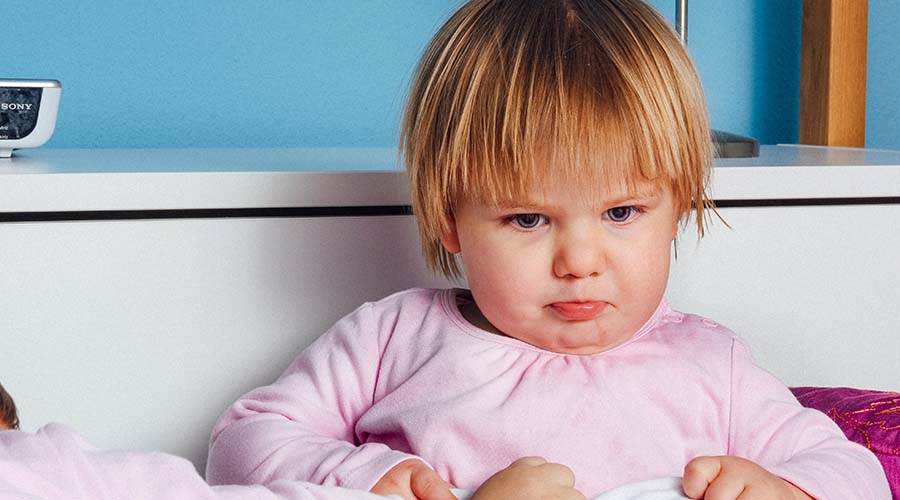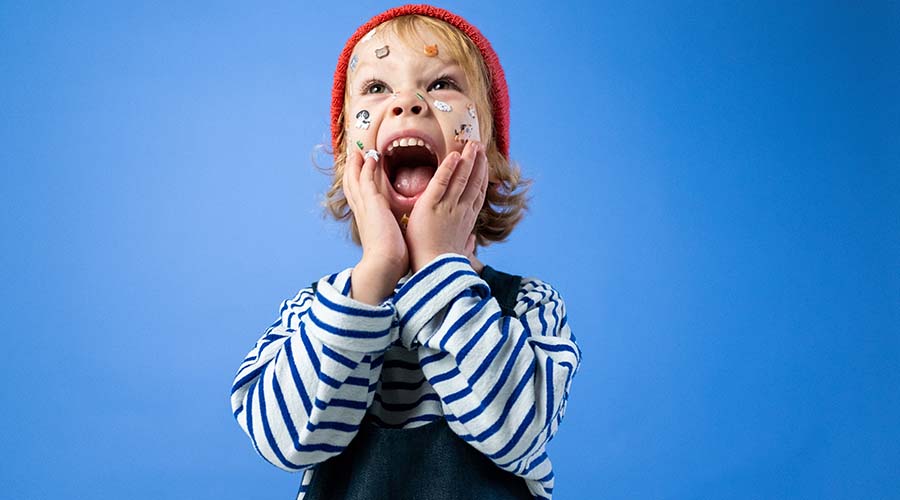settings
children
With Famly since
When you're working with children, it can be difficult to interpret their verbal signals at times, especially if their vocabulary is not yet developed. Additionally, young children may not always use their words to express how they’re feeling, or what they desire.
So with young children, how do we know their needs, when we can't rely on verbal communication?
Plain and simple: by paying attention to their body language.
The little ones in your early education setting may not yet understand how to appropriately communicate how they’re feeling with their words, or they might just not have developed the language skills needed for it. But by understanding how to read individual children’s signals, you’ll be better able to attend to each child’s needs to make them feel seen and heard.
But what behaviours or actions should we look for? How do we know what these signals mean? How do we communicate our own feelings to our toddlers and twos?
Below, we discuss some tips for recognizing and interpreting children’s body language in early education settings.

The importance of nonverbal communication skills in early education
Paying attention to your children’s body language in your early education setting is crucial, as tuning into their body language and nonverbal signals helps you to attend to their needs.
Young children learn to use nonverbal signals long before they speak their first words. When they are unable to communicate their desires using speech, they may rely on pointing, making vocalizations, or tilting their head up or down to communicate how they’re feeling to you.
Given that we can’t always rely on interpreting verbal requests from our little ones, it’s important that we learn to pay attention to, and interpret, their nonverbal signals so we can support them to the best of our ability.
With non verbal communication, it's not one-size-fits-all
In a perfect world, there would be an easy manual for reading and decoding children's body language. But the truth is, something as nuanced as non verbal communication could never be a one-size-fits-all situation.
Why not? Because there are simply just too many factors that can influence children's behavior – home environments, baseline personality and temperament, disability and neurodivergency, or even their mood that day. All of these can shape their non verbal communication, and give something as simple as eye contact a very individual meaning.
It's a waste of time to focus too hard on "What does this slouching mean from this child?", or “Does this child’s deep breathing mean they’re bored or relaxed?”. Answering that, truly, requires that you know each child on an individual basis.
If there is a "universal" answer here, it's that you need to form individual connections you’re your little ones in order to understand what their body language means for them. And to start with that, you need to be open from your end. Try to tune in to a child's communication skills, so you can encourage communication in a way tailored to that child's individual development.
The one thing that is truly in your control is your own body language, which we get into further down below.

Understanding non verbal communication with neurodivergent children
Each child has their own individual way of communicating – it’s part of what makes us unique as human beings! Similarly, you may communicate with each child in a special way – again, since we all have diverse needs and feelings, and we express those in different ways.
But, what about children who experience disability or are neurodivergent? Do their signals mean something different than typically-developed children?
Often times, children with special needs may have some difficulty in demonstrating, recognizing, and interpreting their own and others’ nonverbal signals. A child who experiences disability may exhibit signals that should be interpreted in a different way.
Here are some tips for considering body language in little ones with special needs:
- Don't fixate on making eye contact: Children with special needs, particularly those on the autism spectrum, have difficulty with maintaining eye contact. A child on the autism spectrum can often listen better to what you have to say if they aren’t focused on having to maintain eye contact with you.
- Be wary of physical touch: Some little ones with special needs may have sensitivity to physical touch. While one child may love hugs and cuddles, another may want to avoid it at all costs. Be sure to pay attention to the kinds of approval and warmth that a child likes – a high five, clap, or a thumbs-up may be good options for children who prefer to have little to no physical contact with others.
- Adjust your communication styles as needed: As mentioned previously, each individual child has particular needs and desires. Your communication style with one child will vary greatly from the child next to them. By spending time with them, and learning what their unique nonverbal signals are, you’ll be better able to meet them at the child's level.

Understanding your own body language when working with children
Not only do we pay attention to our children’s body language in early education settings, but children use our own nonverbal signals to understand how they should be behaving. For example, a smile tells a child that you’re happy or pleased, while crossed arms may indicate disappointment or anger.
It’s important to maintain and display a warm, calm tone and body language towards children in your early education setting, as it indicates to them that they’re important to you, and that you’re interested in what they have to say.
As we explored above, children's own body language is too complex and individual to be able to reliably 'read' — that is, until you get to know them well. But in the meantime, you can work ensure your own non verbal communication is open, accepting and positive.
Here are some ways to demonstrate nurturing signals to children in your early education setting:
- Using eye contact: Eye contact tells the child that they have your full attention, and that they are important to you. But take note — depending on the child, too much eye contact can be overstimulating.
- Bending down to the child's level: When you're speaking with children, your posture matters too. This lets children know that you want to be close, and helps to encourage a closer connection.
- Maintain a relaxed, upright posture: Slouching or crossed arms tells a child that you’re uninterested, while sitting upright demonstrates your interest in them. Additionally, maintaining a sense of calmness tells the child that they’re safe, and taken care of.
- Smile back: If a child smiles at you, smile back! This lets them know that you understand how they’re feeling, allowing them to feel seen and heard.
The big ideas
Try learning journals for free
Add observations, and build digital learning journals to share with families instantly. All with your completely free 14-day trial.
Get started









